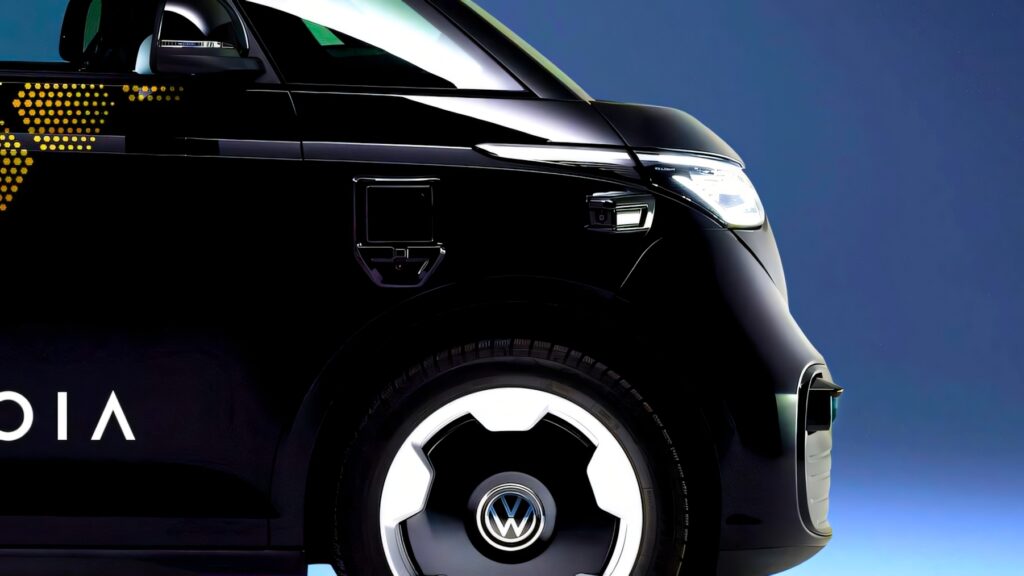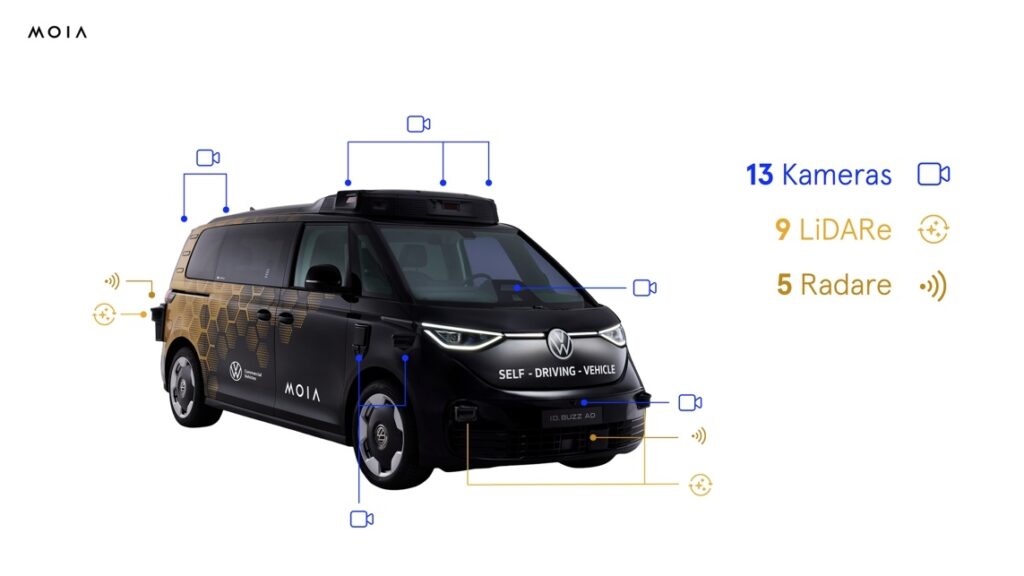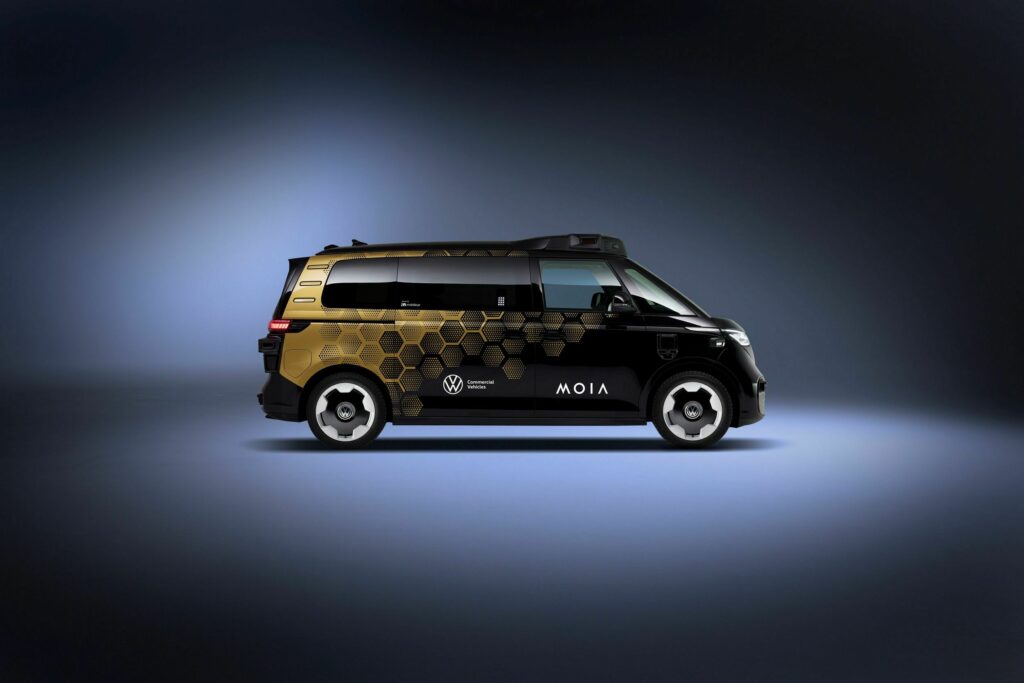VW ID. Buzz AD

Volkswagen, through its MOIA brand, has rolled out its latest innovation, the ID. Buzz AD. This new entrant into the world of autonomous vehicles is more than just a concept; it’s a tangible step toward future mobility in both Europe and the U.S. With a target launch in 2026, the ID. Buzz aims to redefine urban transport with autonomous electric vans.
Features

What sets the ID. Buzz AD apart is its reliance on Mobileye’s sophisticated self-driving technology. The van is fitted with an extensive suite of 27 sensors, including 13 cameras, nine LiDAR systems, and five radar sensors. This configuration provides a comprehensive 360-degree view of the environment, optimizing the van’s ability to navigate through complex urban landscapes.
This autonomous van isn’t just about technology. It’s been optimized specifically for mobility services, making it ideal for cities and fleet managers. With an extended wheelbase and raised roof, the ID. Buzz is tailored for functionality and comfort, allowing for easy boarding through smartphone access. Once inside, passengers will find a cozy interior complete with wood-inspired flooring and spacious seating for four.
Inside the Buzz

The interior of the ID. Buzz is both utilitarian and sleek. Features include prominent grab handles and a set of buttons labeled SOS, Support, and Start/Stop, blending practical safety with futuristic design. Interestingly, a covered driver’s seat and steering wheel suggest a mix of self-driving capabilities with optional manual control for emergencies.
The Driving Experience
Driving, or rather riding in, the ID. Buzz AD is completely different from traditional vehicles. It’s akin to stepping into a modern urban living room that moves on its own. Compared to the established rides from Tesla, like the Model 3, this isn’t about speed or autonomy on the highway. Instead, it feels more like a seamless part of a city’s infrastructure. The autonomous tech enables a smooth, gentle ride, focusing on passenger comfort over performance. The absence of a driver doesn’t detract from the confidence one feels in the ID. Buzz’s capabilities.
Competitive Edge
Interestingly, this launch coincides closely with Tesla’s rollout of their own autonomous Robotaxi in Austin, Texas. However, VW’s approach is distinctive: rather than just a ride-hailing service, MOIA’s ID. Buzz AD targets corporate users and mobility services. The emphasis is on providing a “turnkey package,” neatly wrapping technology with fleet management for city use.
A Look Ahead
There’s still a lot of ground to cover as the ID. Buzz AD prepares for full deployment. However, as Volkswagen Group CEO Oliver Blume mentioned, the real deployment across Europe and the U.S. is set to kick off in 2026. It’s not just about being another self-driving vehicle; it’s about embedding this tech as a sustainable solution within larger urban systems.
Kia Tasman Unleashed
BMW Explores EVs Again
Nissan Cube Airbag Woes
Ford Issues Major Recall
Waymo Takes on NYC